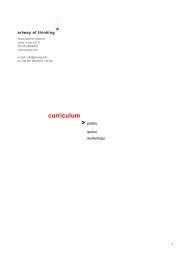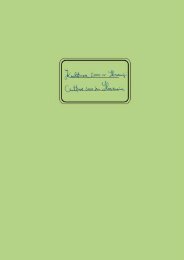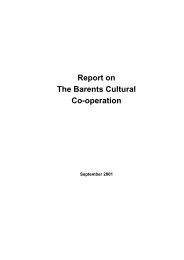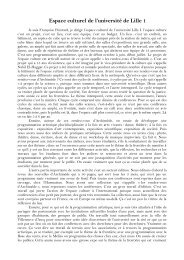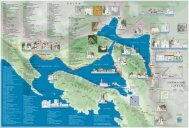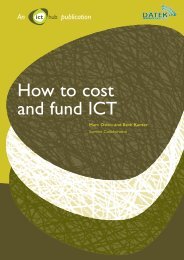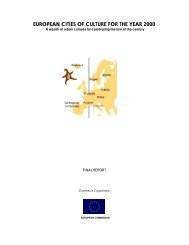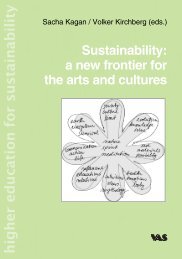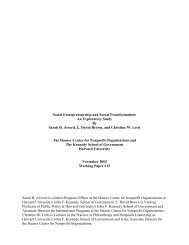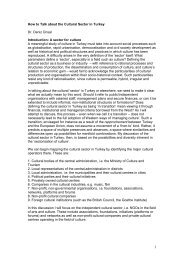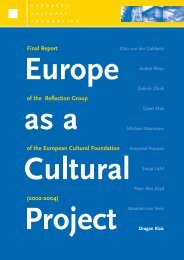A guide to the export and import of cultural goods between Russia ...
A guide to the export and import of cultural goods between Russia ...
A guide to the export and import of cultural goods between Russia ...
You also want an ePaper? Increase the reach of your titles
YUMPU automatically turns print PDFs into web optimized ePapers that Google loves.
Latvia<br />
Chapter 3: European Union Member States<br />
Are <strong>the</strong>re different types <strong>of</strong> licence? What type <strong>of</strong> licence do I need?<br />
For <strong>export</strong> outside <strong>the</strong> EU, a single licence is issued. There is a distinction <strong>between</strong> permanent<br />
<strong>and</strong> temporary <strong>export</strong> on <strong>the</strong> licence.<br />
What are my first steps? How do I plan this process <strong>and</strong> how long might it take?<br />
You must apply for <strong>the</strong> licence if you are <strong>the</strong> purchaser <strong>of</strong> <strong>the</strong> object, ei<strong>the</strong>r directly or<br />
through an authorised person. You should present your application <strong>to</strong> <strong>the</strong> specialised<br />
Section <strong>of</strong> <strong>the</strong> Expertise Department in <strong>the</strong> Inspection. You will have <strong>to</strong> fill <strong>the</strong> application<br />
form for <strong>the</strong> <strong>export</strong> <strong>of</strong> <strong>cultural</strong> <strong>goods</strong> from <strong>the</strong> terri<strong>to</strong>ry <strong>of</strong> <strong>the</strong> EU.<br />
Apart from filing <strong>the</strong> application <strong>and</strong> providing your data, you must also submit <strong>the</strong> following:<br />
• The <strong>cultural</strong> object which you want <strong>to</strong> <strong>export</strong><br />
• Colour pho<strong>to</strong>graphs (3 copies, not older than ten years)<br />
• A detailed description <strong>of</strong> <strong>the</strong> object <strong>to</strong> be <strong>export</strong>ed<br />
• An authorisation (if <strong>the</strong> applicant is not <strong>the</strong> actual owner)<br />
The object is subject <strong>to</strong> examination <strong>and</strong> within 15 days after this <strong>the</strong> Inspection takes a<br />
decision <strong>to</strong> permit or prohibit <strong>the</strong> <strong>export</strong> <strong>of</strong> <strong>the</strong> <strong>cultural</strong> object. If it is necessary <strong>to</strong> make<br />
an expert examination <strong>of</strong> <strong>the</strong> object or <strong>to</strong> clarify <strong>the</strong> status <strong>of</strong> ownership rights on it, <strong>the</strong><br />
Inspection can retain <strong>the</strong> object for up <strong>to</strong> one month.<br />
How do I find if <strong>the</strong> art object I want <strong>to</strong> <strong>export</strong> is <strong>of</strong> national significance? Is <strong>the</strong>re a Public<br />
Inven<strong>to</strong>ry <strong>of</strong> <strong>cultural</strong> <strong>goods</strong> <strong>of</strong> special interest or <strong>import</strong>ance?<br />
Cultural <strong>goods</strong> <strong>of</strong> special <strong>import</strong>ance are listed in <strong>the</strong> State Registry for Protected Cultural<br />
Monuments. The inven<strong>to</strong>ry <strong>of</strong> <strong>cultural</strong> monuments is made by <strong>the</strong> Inspection. Public access<br />
<strong>to</strong> <strong>the</strong> Registry is available through <strong>the</strong> Inspection. It is <strong>the</strong>refore possible <strong>to</strong> obtain<br />
information on <strong>the</strong> status <strong>of</strong> a good before its purchase.<br />
Are <strong>the</strong>re any exemptions for particular <strong>goods</strong>?<br />
The temporary <strong>export</strong> <strong>of</strong> <strong>cultural</strong> <strong>goods</strong> that form part <strong>of</strong> collections in National Museums<br />
is subject <strong>to</strong> a specific regime: permits (not licences) are issued for <strong>the</strong>se objects by <strong>the</strong><br />
State Authority on Museums.<br />
Do museums <strong>and</strong> galleries need licences for temporary <strong>export</strong>s (e.g. a <strong>to</strong>uring exhibition)? Do<br />
non-pr<strong>of</strong>it organisations need <strong>export</strong> licences?<br />
The temporary <strong>export</strong> <strong>of</strong> objects from <strong>the</strong> National Collection has its own specific regime<br />
under <strong>the</strong> Museums legislation <strong>of</strong> Latvia, different from <strong>the</strong> regular <strong>export</strong> licence procedure.<br />
Museums do not apply <strong>to</strong> <strong>the</strong> Inspection, but <strong>to</strong> <strong>the</strong> State Authority on Museums.<br />
This Authority issues <strong>the</strong> relevant temporary <strong>export</strong> permit, <strong>and</strong> needs <strong>to</strong> be notified in<br />
writing within two weeks after <strong>the</strong> <strong>cultural</strong> object from <strong>the</strong> National Collection has been<br />
re-<strong>import</strong>ed <strong>to</strong> Latvia.<br />
136



